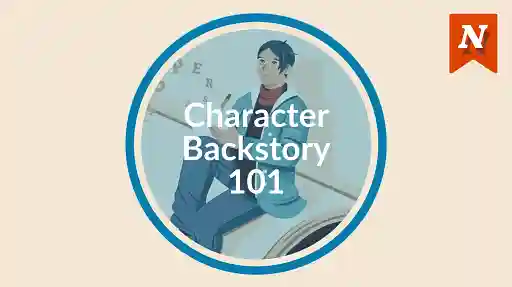This guest contribution by the team at Reedsy explores ways to subvert character clichés for a less predictable story.
Creating the next Harry Potter or Holden Caulfield is no easy feat! When writing secondary characters in particular, it’s easy to fall back on clichéd archetypes and stock characters. Yet this isn't necessarily bad. Embracing stock characters can be more effective than making your character over-complicated. You can turn common or overused character tropes on their head, too.
Read our detailed definition of 12 Jungian archetypes, and read on for five easy ways to inject life into familiar character types:
1. Subvert archetypes to avoid character clichés
The most common means of subversion, of making something other than what it first appears, is to introduce a cliché before revealing things aren't what they appear.
In other words it’s still okay to introduce a valiant knight in the mold of Sir Lancelot... So long as he eventually reveals himself to be more than just an obvious symbol.
Lev Grossman — the author of The Magicians (often referred to as “Harry Potter for adults”) gives us an example.
Example of subverting a character cliché
In The Magicians, Grossman's character Henry Fogg is a Master Magician and Dean of Students at a school for magic. The author surely knew his character's type and function could invite comparisons to another fictional wizard: Dumbledore.
However, unlike the wise, benevolent leader of Hogwarts, Fogg quickly shows himself to be cowardly, selfish, and severe. He ultimately fills an adversarial role opposite Quentin, the protagonist, Fogg's would-be mentee.
This serves a narrative purpose. It turns a secondary character into a source of conflict.
But it also works rhetorically, similarly to a 'red herring': it surprises the reader and makes them question their own intuition.
Subversion can also be used as a means of character or plot development.
In Watchmen, Alan Moore and Dave Gibbons' graphic novel series, the authors turn many superhero tropes on their heads. The character Ozymandias is set up as the typical “smartest man in the world”. This is a stock or clichéd comic book character who is overshadowed by brawnier counterparts in strength but not smarts.
However, Ozymandias' non-threatening appearance makes him a ruthlessly efficient and undetectable villain. The revelation of the character's malevolent power packs all the more punch since, up until this point in the story, readers may see him as little more than a forgotten sidekick. [Use the 'Character' section of the Now Novel dashboard to brainstorm characters and their purpose - Ed's note.]
To subvert your own characters:
- Identify a list of character clichés usually associated with their type (e.g. 'warrior' equals 'strong').
- Think of how stock character types (such as “mentors”) have typical behavioural features. Dumbledore or Charlotte the Spider will always be wise and cautious.
- Then create a character to fit that mold perfectly… before revealing that, say, their “wisdom” is just stolen from a book of idioms. Subversion such as these add surprise complexity to your characters and story.
2. Parody the clichéd character archetype
If you prefer to introduce a character who isn’t any deeper than a cliché, there are ways to make this interesting too. It's a classic approach of comedy. You can take this character and their development in the opposite direction to the first approach and parody this type.
To parody is to make a familiar thing humorous through exaggeration.
Every archetype has a set of recognizable traits. That, naturally, is what makes them archetypal. Subverting them means ignoring expected traits, even though your audience may expect them. To parody them is to exaggerate those traits to their absolute extremes.
Examples of parodying character archetype clichés
'The Warrior' archetype, for example (characters such as Hercules, Odysseus, and Aragorn) is often courageous and tough, but also egotistical. Readers will know this and may be on the lookout for those traits in a warrior character.
Instead of trying to hide or downplay them, you could embrace them, ramping them up to riotous levels. Marvel does this in its blustering parody of Old World warriors, Thor.
Another example is the Waco Kid from Mel Brooks’s parody Western movie, Blazing Saddles. He clings so strongly to his title of the Greatest Gunslinger Ever that he dives into any and every confrontation available.
This works out well for the Waco Kid, until he’s challenged to a duel by a six-year-old. In keeping with his character, he accepts. Then, realizing he can’t hurt a child, he tries to renege… and takes a bullet in his rear end.
Characters like this are funny because of the reader’s expectations. Parody involves looking at the premise of a character (a gunslinger who will never back down from a fight) and taking it to wacky, yet logical extremes (if that’s true, the committed warrior will even fight a child, in theory).
To parody an archetype, take a fact about it that the reader will likely know (that mentors are wise, for example). Reveal it to be silly or comically untrue. With the joke already set up, you can deliver punchline after punchline.

3. Deconstruct the archetype
It’s also possible to embrace character clichés at first, then reveal unexpected depth by giving an original and psychologically sound explanation as to why the character is this way.
By deconstructing (undoing) a cliché, you have the benefit of playing an archetype "straight" while also examining the realistic consequences behind it.
The popular teen movie Mean Girls — despite the title of the book it’s based on, Queen Bees & Wannabes — deconstructs the Queen Bee character type. Regina George is in every way the stereotypical popular girl or 'queen bee' in her high school. Yet throughout the course of the movie, we see that it stems from her pampered childhood and personal insecurities.
We also come to understand that her glamor and cruelty are not 'just because'. Instead, they're crucial tools for her to maintain her power within her social group. If she were kinder, she'd risk losing this status and privilege.
This reveals two levels to the character:
- Her motivations (what primal need is her behavior fulfilling?)
- The pressures involved in being the most popular girl in school - the facade the character has to maintain to keep their 'queen bee' status
Deconstructing a stock character gives your story emotional depth and style. It does require a lot of critical thought to pull off well. To nail it, try these three steps:
- Identify the attributes of a character type — say, the likable and frivolous Comic Relief character.
- Explain them in a surprising way — perhaps they're not just a class clown, but use humor as a coping mechanism.
- Reveal something deeper and true about the character and archetype — (e.g. that clowns are often sad behind the joker mask). Make readers wonder if they’ve misjudged the archetype you're portraying.
4. Lampshade the archetype
“Hanging a lampshade,” or lampshading, is one of the coolest tricks in any writer’s toolkit. In a nutshell, lampshading is the technique of countering your reader's disbelief in a character's 'reality' by acknowledging how blatantly they fit a cliché.
That might sound as clear as fog, so let’s look at an example.
An example of lampshading character clichés
If the would-be victim in a horror story trips while running away (as they always seem to do) it might take the reader out of your story. Because this action is so commonplace in the horror genre.
However, what if the would-be killer were to stop and comment? Perhaps they say, “Oh, you're going to trip and make this boring?”
Lampshading signals to the reader that they should be aware that they’re reading a story, not witnessing reality. It's why this approach is a classic device of self-aware, 'campy' stories. Be aware that in certain contexts (such as a creepy horror scene), the effect could be ironic and camp. Lampshading thus isn't a suitable approach to cliché for realist fiction that strives for psychological realism.
Lemony Snicket's A Series of Unfortunate Events books use lampshading consistently. It gives the narrator, Lemony Snicket, a personality, and also introduces the series’ young audience to a fairly complex storytelling device.
Each time a character starts to act in a way typical of their archetype, he will explicitly recognize it in the text, before reminding the reader that this is no ordinary story.
Here's an example, from the first book, The Bad Beginning:
“As I said at the very beginning, the book you are holding in your hands does not have a happy ending. It may appear now that Count Olaf will go to jail and that the three Baudelaire youngsters will live happily ever after with Justice Strauss, but it is not so.”
Here, Snicket lampshades the typical arc for a Victorian-like villain, before also subverting it and taking the story in another direction.
This technique can be humorous, irreverent, and referential. It is, however, rarely realistic. If you’re willing to let your novel get a little 'meta' (self-referential), lampshading can do wonders for giving new life to old tropes. But if you’re trying to tell a true-to-life story with deep characters, it's better to keep lampshading for a humorous tale.

5. Imply the archetype
All the above approaches are fun and effective. Yet they require a fair amount work. If you’re trying to use stock or clichéd characters to begin with, extra work could be something you want to avoid.
If a bit player only appears in a scene, they don’t have to be a deep deconstruction of every similar character ever. Instead, you can imply depth, and leave it to the reader to fill in the blanks.
This means painting a character in broad strokes that allow readers to bring their knowledge of this cliché to fill in the gaps. Don’t spend ages describing a standard high school cheerleader (if she's not that important). Just give a few nods to the cliché and let your audience fill in the rest.
The best way to get away with clichés, in other words, is not to draw attention to them.
Of course, when it comes to clichéd archetypes and stock characters, you could always simply not use them. But if there’s a moral here, it’s that it adds variety to fill a story's background with different types of characters. So flip expectations upside down and turn predictable stock characters into rare treats.
About the contributor
Casimir Stone is a writer and team member at Reedsy, a professional publishing network that connects authors with top editors, designers and book marketers.









Awesome ideas. Cliches of all types make me cringe. I think great character development can save the worst of literary works, because people are generally interesting...even being boring can be interesting. My go to method for creating characters with depth is... 1. Starting with a flaw (because nobody's perfect) and then 2. ...adding a deep dark secret (even if it doesn't get revealed...because we all have one) 3. ...and then building in desire...something they want more than anything in the world Will be adding some of these techniques to my repetoire, especially parodying the cliched character. I've seen this done well in dark comedies and satire.
2 Cents 'N' - Over 6 years ago
Hi 2Cents, thank you for the feedback and for sharing your personal process - it's a good one. Thanks for reading!
Bridget At Now Novel - Over 6 years ago
Blazing Saddles' is Mel Brooks, not Mel Gibson.
Andrew Rawlings - Over 6 years ago
Quite right, Andrew - good catch. That's been corrected.
Bridget At Now Novel - Over 6 years ago
Blazing Saddles was a Mel Brooks movie, not a Mel Gibson movie. =)
Sharon - Over 6 years ago
Thanks Sharon! Great catch, this has been corrected. Thanks for reading :)
Bridget At Now Novel - Over 6 years ago
Great examples of a skill set every writer would do well to acquire. All too often we slip into cliche by poor habits, uninspired writing, and a lack of critical consideration. Looking for cliches to subvert and/or pathos to plumb for gags is a great way to avoid self-inflicted wounds. Thanks for sharing.
Elias Mc Clellan - Over 6 years ago
It's a pleasure, Elias, thank you for reading and sharing your thoughts :)
Bridget At Now Novel - Over 6 years ago